2005
Type of resources
Available actions
Topics
Keywords
Contact for the resource
Provided by
Years
Formats
Representation types
Update frequencies
Scale
-

The overall aim is to establish the timing and rate of thinning of the West Antarctic Ice Sheet (WAIS) from its maximum extent in an area inland of the Weddell Sea embayment. The specific objectives are (a) to date geomorphological evidence of ice sheet thinning in the Ellsworth Mountains using in situ cosmomogenic nuclides and (b) to infer WAIS dynamics (specifically grounding line and ice volume changes) in the Weddell Sea embayment through high-resolution glaciological modelling, constrained against the geomorphological record of elevation change through time. The importance of the project is that the past dynamics of the WAIS have implications for its future behaviour, and thus global sea level change.
-
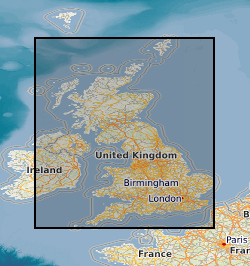
[This metadata record has been superseded, see http://data.bgs.ac.uk/id/dataHolding/13480158] The Geophysical Borehole Log index provides details of all digital geophysical logs available to BGS. The database provides the borehole metadata related to logging and metadata for the logging itself and log data stored in a proprietary hierarchical database system (PETRIS RECALL). Contains most digital geophysically logged bores known to BGS National Geological Records Centre. Scattered distribution of boreholes, locally dense coverage, relatively few logs from Scotland & Central Wales, increasing data density on UK continental Shelf.
-
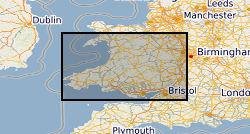
The dataset is based on a 1 hectare(ha) vector grid which covers the whole of Wales. It has been populated with a series of environmental and cultural assets, reflecting the presence or absence of an asset in an individual cell. The dataset has been designed to enable a single asset to be displayed in a generalised fomat; total numbers of assets within a given cell; or the opportunity to create in unique combination of the assets based on the generalised 1 ha data. The data is also available at 1km.
-
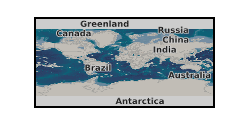
The IEA (International Energy Agency) Weyburn Carbon Dioxide (CO2) Monitoring and Storage Project has analysed the effects of a miscible CO2 flood into a carbonate reservoir rock at an onshore Canadian oilfield. Anthropogenic CO2 is being injected as part of an enhanced oil recovery operation. The European research was aimed at analysing longterm migration pathways of CO2 and the effects of CO2 on the hydrochemical and mineralogical properties of the reservoir rock.
-

BGS identified a requirement to develop methane and carbon dioxide gas emission data holdings in a format that would be suitable both for BGS GeoReports and for value added resellers, such as Landmark, so that information on methane (CH4) and carbon dioxide (CO2) gas emission hazards from natural sources and coal mining can be included in reports for house buyers and developers. Rock strata and unconsolidated deposits can be classified using BGS 1:50,000 scale DiGMapGB data (or 1:250,000 for those sectors of Wales for which 1:50,000 scale geological data is not availabe) according to their susceptibility to gas seepages.
-
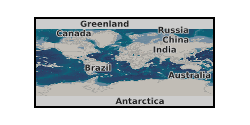
SCCS is the largest Carbon Capture and Storage (CCS) research group in the UK. Our internationally renowned researchers provide connected strength across the full CCS chain. With our unique position SCCS is able to act as the conduit between academia, industry and government. We are able to provide a single point of coordination for all aspects of CCS research ranging from capture engineering and geoscience, to social perceptions and environmental impact, through to law and petroleum economics. SCCS has access to cutting-edge experimental and analytical facilities, expertise in field studies, modelling and simulation, key academic and research personnel to accelerate the development of CO2 transportation, capture and subsurface storage. We undertake strategic fundamental research and are also available for consultancy. In addition, we perform a key role in providing impartial advice to industry, the public sector, government agencies, and policy makers. Founded in 2005, SCCS is a partnership of the British Geological Survey, Heriot-Watt University, the University of Aberdeen, the University of Edinburgh and the University of Strathclyde working together with universities across Scotland. SCCS is funded by the Scottish Funding Council (SFC).
-
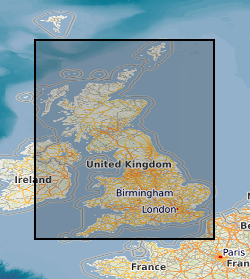
The GeoSure data sets and reports from the British Geological Survey provide information about potential ground movement or subsidence in a helpful and user-friendly format. The reports can help inform planning decisions and indicate causes of subsidence. The methodology is based on BGS DiGMap (Digital Map) and expert knowledge of the behaviour of the formations so defined. This dataset provides an assessment of the potential for a geological deposit to compress under an applied load, a characteristic usually of superficial deposits such as peat or alluvium. Some types of ground may contain layers of very soft materials like clay or peat. These may compress if loaded by overlying structures, or if the groundwater level changes, potentially resulting in depression of the ground and disturbance of foundations. Complete Great Britain national coverage is available. The storage formats of the data are ESRI and MapInfo but other formats can be supplied.
-
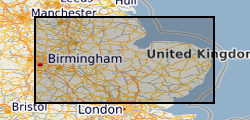
The data comprises four GIS layers representing the permeability of geological deposits for Great Britain (bedrock, superficial, artificial and mass movement deposits). The permeability data has been derived from DiGMap-GB (Digital Geological Map Data of Great Britain), and therefore reflects the scale of DiGMap-GB. For the majority of the Great Britain, the scale is 1:50,000, however in areas where the geology is not mapped to this scale, the next best available scale is used. For bedrock deposits this is 1:250,000 and for superficial deposits this is 1:625:000. Artificial ground and mass movement deposits have not been mapped beyond 1:50,000. The data is updated annually, or after a major new release of DiGMap-GB. The permeability data describes the fresh water flow through geological deposits and the ability of a lithostratigraphical unit to transmit water. Maximum and minimum permeability indices are given for each geological unit to indicate the range in permeability likely to be encountered and the predominant flow mechanism (fracture or intergranular). Neither of the assigned values takes into account the thickness of either the unsaturated or saturated part of the lithostratigraphical unit. The data can be used freely internally, but is licensed for commercial use. It is best displayed using a desktop GIS, and is available in vector format as ESRI shapefiles and MapInfo TAB files.
-
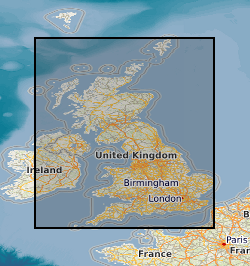
The data comprises GIS layers representing the permeability of mass movement deposits for Great Britain. The permeability data has been derived from DiGMap-GB (Digital Geological Map Data of Great Britain), and therefore reflects the scale of DiGMap-GB. For the majority of the Great Britain, the scale is 1:50,000,. The data is updated annually, or after a major new release of DiGMap-GB. The permeability data describes the fresh water flow through mass movement deposits and the ability of a unit to transmit water. Maximum and minimum permeability indices are given for each geological unit to indicate the range in permeability likely to be encountered and the predominant flow mechanism (fracture or intergranular). Neither of the assigned values takes into account the thickness of either the unsaturated or saturated part of the lithostratigraphical unit. The data can be used freely internally, but is licensed for commercial use. It is best displayed using a desktop GIS, and is available in vector format as ESRI shapefiles and MapInfo TAB files.
-

The GeoSure datasets and related reports from the British Geological Survey provide information about potential ground movement due to six types of natural geological hazard, in a helpful and user-friendly format. The reports can help inform planning decisions and indicate causes of subsidence. The Collapsible Ground dataset provides an assessment of the potential for a geological deposit to collapse (to subside rapidly) as a consequence of a metastable microfabric in loessic material. Such metastable material is prone to collapse when it is loaded (as by construction of a building, for example) and then saturated by water (as by rising groundwater, for example). Collapse may cause damage to overlying property. The methodology is based on BGS DiGMapGB-50 (Digital Map) and expert knowledge of the origin and behaviour of the formations so defined. It provides complete coverage of Great Britain, subject to revision in line with changes in DiGMapGB lithology codes and methodological improvements. The storage formats of the data are ESRI and MapInfo but other formats can be supplied.
 NERC Data Catalogue Service
NERC Data Catalogue Service